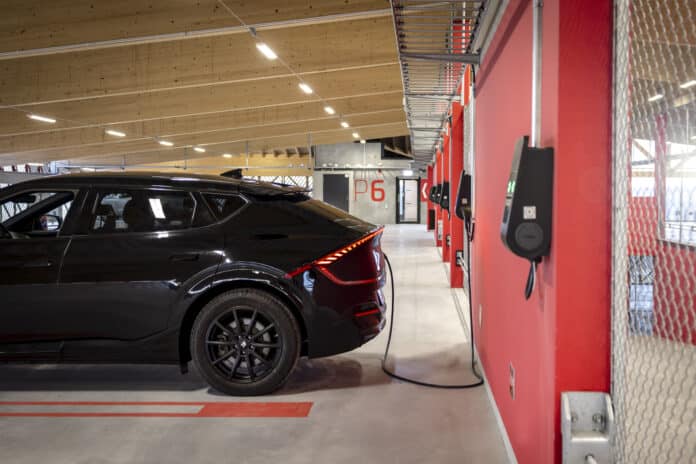Destinations investing in EV charging face the challenge of selecting the right mix of power. While slow and ultra-fast options have their place, new findings suggest that medium-speed (8-50kW) chargepoints represent a crucial “sweet spot.” This approach can significantly enhance visitor dwell time and spending, while also providing value for money for EV drivers.
Fast Chargepoints: A Quiet Revolution in Market Share
While headlines often focus on ultra-fast charging, a less conspicuous but significant shift is occurring in the UK’s public EV charging landscape. Medium-paced units, delivering between 8kW and just under 50kW, are quietly but steadily gaining traction. Analysis by CTEK of Zapmap data on new UK public chargepoint installations reveals a consistent climb in market share for these “fast” chargers, rising from 15 percent in 2021 to a substantial 24 percent by the close of 2024.
The Compelling Economics of the Medium Speed
For destinations laser-focused on attracting more visitors and encouraging longer stays, the economics of these medium-speed chargers present a powerful advantage for both the EV driver and, ultimately, the destination’s bottom line. Encompassing faster DC charging up to 50kW and AC charging up to 22kW, this power range strikes an optimal balance between speed and cost.
The AA’s February 2025 EV Recharge report highlights this economic advantage starkly: public chargepoints in the 8kW to 49kW range average 59 pence per kWh. This is notably less expensive than rapid (50-149kW) at 74p and ultra-rapid (150kW+) at 78p, translating to potential savings of at least £6 for an 80 percent charge of a typical 50kWh battery.
Unlocking Extended Dwell Time with Strategic AC Charging
Consider the goal of attracting visitors who linger for two hours or more. A strategically placed 22kW chargepoint, such as CTEK’s CC3, can deliver an 80 percent charge – or even more – within that timeframe, assuming the EV’s onboard charger can handle the full 22kW. Even with the 11kW AC charging limit of many current models, a two-hour charge can still provide drivers with approximately 100 miles of added range, a significant incentive to choose a destination with such facilities.
A Tale of Two Trends: Ultra-Rapid Rises While Others Recede
Interestingly, the ultra-rapid charging segment (150kW and above) mirrors the growth of the medium-speed category, also consistently gaining market share year-on-year. Conversely, the other two segments in the public charging ecosystem – those under 8kW and those between 50kW and 150kW – have both experienced a consistent decline in their share of new installations. The latest data from Zapmap, as of March 31, 2025, confirms the continuation of these trends, with sub-7kW chargepoints seeing a falling share despite remaining the most numerous, and the fast (8-50kW) sector rapidly catching up in installation rates.
Understanding the EV Driver’s Charging Psychology
Savvy destinations will view their charging infrastructure through the eyes of the EV driver. These drivers appreciate having a spectrum of charging options – slow, fast, rapid, and ultra-rapid – to meet their varied needs. A quick top-up during a brief stop on a long journey differs significantly from a longer, more cost-conscious charge while visiting a destination for several hours.
The Strategic Advantage of Fast AC for Destination Appeal
For retail and leisure destinations, in particular, the provision of fast AC charging presents a potent tool for attracting and retaining visitors. By offering this convenient and relatively cost-effective charging option, destinations provide a compelling reason for EV drivers to choose their location, plug in, and spend time (and money) while their vehicle charges.
Three-Phase Power: The Underpinning of Efficient Destination Charging
The utilization of three-phase electricity in charging infrastructure is a key enabler of faster AC charging speeds. Importantly, three-phase power can also be leveraged by many plug-in hybrid EVs (PHEVs), with modern models often capable of charging at the same AC speeds as fully electric BEVs. Furthermore, AC installations typically involve a lower per-plug investment, allowing destinations or their partner Charge Point Operators (CPOs) to deploy a greater number of charging sockets, thus improving availability and reducing range anxiety for potential visitors.
Future-Proofing for an Electrified Future
With electric vehicles now representing a significant portion of the UK’s total vehicle fleet, and plug-in vehicle numbers surging by nearly 35 percent in 2024 alone, the future is undeniably electric. Destinations that proactively prepare for this influx of EV drivers seeking convenient and cost-effective public charging in the 8kW to 22kW range will be well-positioned for success. Investing in charging infrastructure designed for future expansion and higher charging speeds is not just a convenience; it’s a strategic imperative.
Source: The information presented in this article is based on a press release provided by Viktors Nikolajevs, UK Key Account Manager at CTEK

